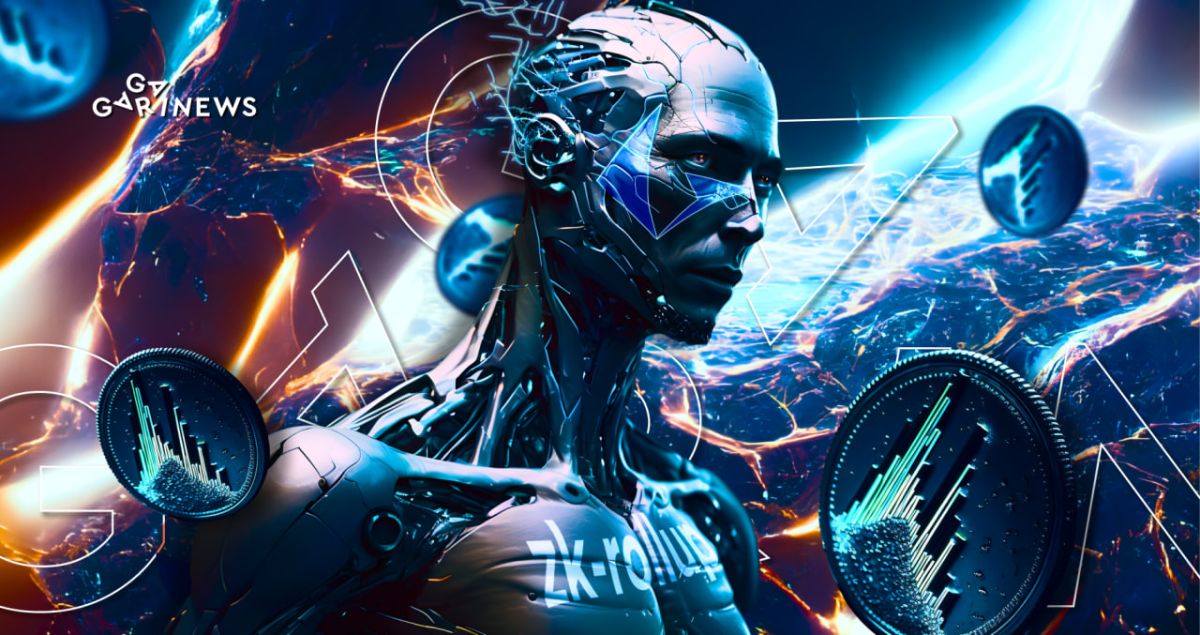Loopring (LRC): A ZK-Rollup Protocol Powering DEXs

Loopring is an open-source protocol deployed on top of Ethereum using zk-rollup (one of the types of Layer 2 blockchains). This technology can be leveraged to create decentralized cryptocurrency exchanges.
The Loopring protocol is made up of smart contracts and schemes that outline the necessary steps to build secure DeFi software with high throughput. These applications can process up to 2025 transactions per second, all while avoiding gas fees. Furthermore, their security is backed by the Ethereum blockchain.
The Loopring protocol utilizes zk-rollup as its foundation, allowing it to carry out the majority of operations, including transaction calculations, exchanges, and transfers, through batch processing outside of the Ethereum blockchain. This feature offers considerable benefits such as reduced service fees and improved scalability.
The concept underlying Loopring aims to unify the benefits of centralized and decentralized exchanges, while mitigating their limitations. In order to boost liquidity, exchange orders for various digital assets are grouped together into “order rings.”
LRC tokens are awarded to nodes in the Loopring network that aggregate transactions and maintain the order book.
LRC token
Loopring has a native token called LRC, which incentivizes users to maintain the Layer 2 solution. The token is also used for providing liquidity, voting rights, and protocol insurance. LRC was listed in 2017 via an initial coin offering (ICO).
Loopring has a market capitalization of 503.6 million dollars with 1.3 billion tokens in circulation. The maximum supply is limited to 1,374,513,896 LRC.
Smart contracts, which underpin the Loopring protocol, govern the issuance of assets. LRC tokens are distributed as follows:
- 80% is allocated to liquidity providers, with 50% of this going to those who provide liquidity for LRC tokens.
- 10% is reserved for users who contribute to the protocol's insurance fund;
- 10% is designated for the DAO community, which makes decisions about how to use these funds to further the protocol's development.
LRC token allocation infographics. Source: Loopring's Medium blog
The brains behind Loopring
Daniel Wang, a software engineer and entrepreneur from Shanghai, is the founder of the Loopring Foundation, which is in charge of the development of the Loopring protocol. Before this, he worked in managerial positions at prominent companies such as Google, Boston Scientific (medical equipment), and JD.com (e-commerce).
He is also a co-founder of projects such as Yunrang Information Technology and Coinport Technology.
The inner workings of Loopring
The Loopring engine encompasses a relayer, which serves as the operator responsible for the server system that connects to the protocol to initiate zk-rollup. By means of the relayer, hash data inserted into the Merkle tree structure are posted and updated. The creation of blocks and the confirmation of their authenticity is achieved through the utilization of zero-knowledge proofs such as zk-SNARK. A host of other processes are also facilitated through the relayer.
The solution is designed to adhere to the principles of the Loopring protocol, which prohibits access to users' funds. Furthermore, the protocol and relayer function as autonomous products. This implies that developers can employ their own server-side components to execute Loopring and their products on its basis.
DEX Loopring
The relayer-managed protocol has paved the way for the creation of Loopring Layer2, a decentralized exchange that automates market making, order books, and payment processing without holding users' assets. According to the project's website, whether you trade a single cryptocurrency pair once an hour or execute 30 trades per minute, the platform offers fast, secure, and gas-free trading.
The content on The Coinomist is for informational purposes only and should not be interpreted as financial advice. While we strive to provide accurate and up-to-date information, we do not guarantee the accuracy, completeness, or reliability of any content. Neither we accept liability for any errors or omissions in the information provided or for any financial losses incurred as a result of relying on this information. Actions based on this content are at your own risk. Always do your own research and consult a professional. See our Terms, Privacy Policy, and Disclaimers for more details.



























